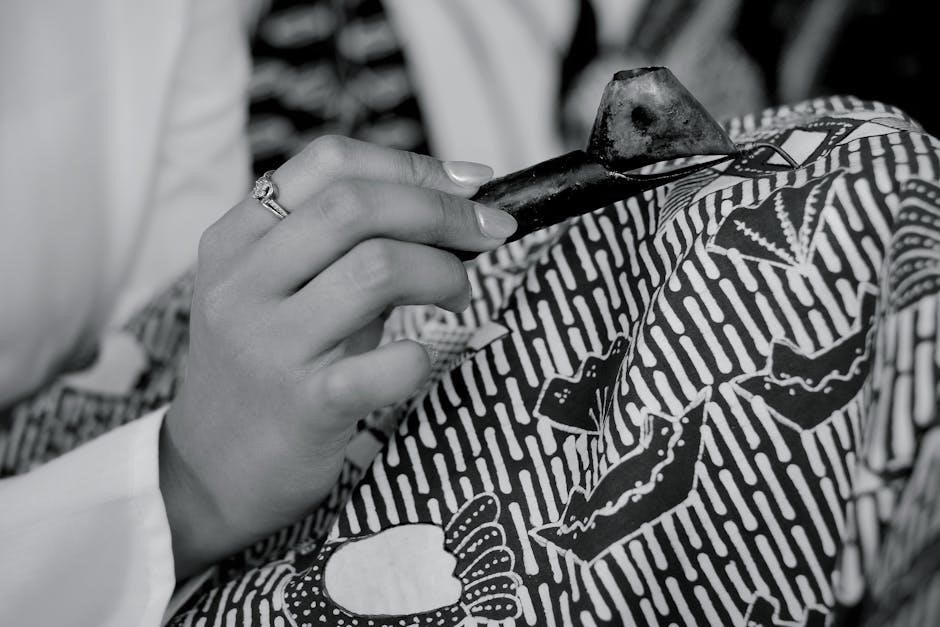The Boss IR-200 is an advanced guitar effects processor offering high-quality impulse response (IR) technology‚ amp and cabinet modeling‚ and seamless integration with external effects for authentic tone shaping.

Overview of the Boss IR-200
The Boss IR-200 is a cutting-edge guitar effects processor designed to deliver high-quality impulse response (IR) technology‚ offering authentic amp and cabinet simulations. Perfect for guitarists seeking versatility‚ it combines advanced tone-shaping capabilities with intuitive controls. The unit features a user-friendly interface‚ including a clear LCD screen and dedicated knobs for easy navigation. With built-in Ambience effects‚ the IR-200 enhances your sound with natural room and space simulations. It supports MIDI connectivity‚ allowing integration with external controllers for expanded functionality. The processor also includes a USB port for loading custom IR data using the dedicated IR Loader software. Whether you’re performing live or recording‚ the IR-200 provides a robust platform for crafting unique tones. Its compact design and rich feature set make it an ideal choice for both experienced players and newcomers to IR technology.
Key Features of the Boss IR-200
The Boss IR-200 boasts a range of impressive features tailored for guitarists. It includes high-quality impulse response (IR) technology‚ allowing for precise amp and cabinet simulations. The processor supports WAV files at 44.1‚ 48‚ or 96kHz‚ ensuring high-resolution sound reproduction. With a built-in Ambience effect‚ players can add depth to their tone‚ simulating natural room environments. The unit also features a versatile Send/Return loop for integrating external effects‚ enhancing flexibility in sound design. MIDI connectivity enables control over external devices‚ while the USB port allows for easy loading of custom IR data using the dedicated IR Loader software. Additional features include a Favorites function for quick access to preferred settings and a built-in noise suppressor to maintain a clean signal. These features collectively make the IR-200 a powerful tool for achieving professional-grade tones in both live and studio settings.

Understanding the Boss IR-200 Manual
The Boss IR-200 manual offers a comprehensive guide to navigating features‚ safety precautions‚ and optimal operation‚ ensuring users maximize the processor’s potential effectively for professional-grade sound shaping.
Navigating the Manual
Navigating the Boss IR-200 manual is straightforward‚ with clear sections covering system settings‚ IR data management‚ and connectivity options. The manual is structured to guide users through setup‚ operation‚ and troubleshooting‚ ensuring seamless navigation. Key features are explained in detail‚ while diagrams and block charts provide visual clarity. The manual also includes a Sound List and IR Loader instructions‚ making it easy to explore and customize tones. By following the manual’s organized layout‚ users can quickly access information on loading IR files‚ adjusting amp settings‚ and integrating external effects. This ensures a smooth learning curve‚ even for those new to advanced effects processors. The comprehensive index and clear language make the manual an essential resource for mastering the IR-200.
Important Safety Precautions
Before using the Boss IR-200‚ it is crucial to follow important safety precautions to ensure proper functionality and avoid damage. Always power on the device last and off first to protect against voltage surges. Keep the volume low when turning the unit on or off to prevent loud startup noises. Never connect or disconnect cables with the power on‚ as this can cause damage or malfunctions. Use only the provided or recommended power adapter to avoid electrical issues. Ensure the device is placed on a stable surface and kept away from moisture or extreme temperatures. For external connections‚ use high-quality cables to maintain signal integrity and prevent interference. Regularly check for firmware updates to ensure optimal performance. By adhering to these precautions‚ users can prolong the lifespan of their IR-200 and enjoy safe‚ reliable operation.
Compatible File Formats for IR Data
The Boss IR-200 supports WAV files for IR data‚ ensuring high-quality sound reproduction. The device is compatible with WAV files at sampling frequencies of 44.1 kHz‚ 48 kHz‚ or 96 kHz. It is essential to ensure that IR files are in the correct format before loading them into the unit. If your IR data is in a different format‚ such as AIFF or FLAC‚ you will need to convert it to WAV using compatible software. The IR Loader software‚ available on the Boss website‚ can assist with this process. Always verify the file format and sampling rate before transferring data to avoid compatibility issues. Properly formatted IR files ensure optimal performance and authentic tone reproduction when using the IR-200.

Using the IR Loader Software
The IR Loader software allows easy transfer of IR files to the Boss IR-200. Download it from the Boss website‚ connect via USB‚ and load your IR data.

Downloading the IR Loader
To download the IR Loader‚ visit the official Boss website and navigate to the support section for the IR-200. Select the appropriate software version for your operating system (Windows or macOS). Ensure your computer meets the system requirements‚ such as compatible drivers. Once downloaded‚ install the IR Loader software following the on-screen instructions. This software is essential for transferring IR data to your IR-200 and managing custom impulse responses. After installation‚ connect your IR-200 to your computer via USB to begin loading IR files. Make sure to use a compatible USB cable and avoid using charging-only cables‚ as they may not support data transfer. The IR Loader is a straightforward tool designed to enhance your IR-200 experience with custom tones.

Loading IR Data into the IR-200
After installing the IR Loader software‚ connect your IR-200 to your computer using a USB cable. Open the IR Loader and select the IR-200 from the device list. Click on “Load IR Data” and browse for your desired WAV files‚ ensuring they are compatible with the supported sampling rates (44.1‚ 48‚ or 96kHz). Select the files and click “Load” to transfer them to the device. The IR-200 allows storing multiple IRs‚ which can be accessed via its memory locations. Once loaded‚ these IRs can be assigned to different presets‚ enabling versatile tone options. Always ensure the files are in the correct format to avoid compatibility issues. The process is user-friendly‚ making it easy to expand your IR-200’s sonic capabilities with custom impulse responses.
Troubleshooting IR File Compatibility
If you encounter issues loading IR files into the IR-200‚ ensure the files are in the correct WAV format with compatible sampling rates (44.1‚ 48‚ or 96kHz). Check the bit depth‚ as the device supports 16-bit or 24-bit files. Verify that the files are not corrupted by opening them in audio software. If errors persist‚ use the IR Loader software to validate the files before transfer. Some IR files may require conversion to mono or stereo formats to work properly. Additionally‚ ensure your IR Loader software is updated to the latest version‚ as outdated software may cause compatibility issues. If problems remain‚ consult the Boss IR-200 manual or contact support for further assistance. Always test files in a DAW before loading them to ensure they are functional and compatible.

External Effects and Integration
The Boss IR-200 seamlessly integrates with external effects via its send/return loop‚ MIDI connectivity‚ and support for expression pedals‚ allowing enhanced control and customization of your tone.
Using the Send/Return Loop
The Boss IR-200 features a flexible send/return loop‚ enabling integration with external effects pedals or processors. This allows you to enhance your tone by incorporating additional effects into your signal chain.
To use the loop‚ connect your external effects to the SEND and RETURN jacks on the rear panel. The SEND jack routes your signal to the external effects‚ while the RETURN jack brings the processed signal back into the IR-200.
Configure the loop settings in the system menu‚ including send level‚ return level‚ and routing options. You can adjust these parameters to optimize the balance between your direct and effected signals.
The send/return loop is ideal for adding reverb‚ delay‚ or other effects to your amp and cabinet simulations‚ providing even greater tonal versatility. Ensure your external effects are properly aligned with the IR-200’s signal flow for the best results.
Refer to the Boss IR-200 manual for detailed instructions on configuring the send/return loop and integrating external effects seamlessly into your setup.
MIDI Control and Connectivity
The Boss IR-200 supports MIDI control‚ offering enhanced functionality for advanced users. MIDI IN and MIDI OUT ports allow seamless integration with external MIDI controllers and devices‚ enabling preset changes‚ parameter adjustments‚ and synchronization with other MIDI-compatible gear.
Connect a MIDI controller to the MIDI IN port to remotely switch memories‚ adjust effects‚ or tweak settings; The MIDI OUT port enables the IR-200 to control external MIDI devices‚ creating a cohesive system for live performances or studio setups.

Use a TRS/MIDI cable (such as the BMIDI-5-35) for reliable connectivity. MIDI control adds flexibility‚ allowing synchronization with drum machines‚ sequencers‚ or other MIDI-capable pedals for a streamlined workflow.

Connecting External Pedals and Expression
The Boss IR-200 allows for enhanced control by connecting external pedals and expression devices. An expression pedal‚ such as the EV-30 or Roland EV-5‚ can be used to adjust parameters like volume or gain in real-time‚ providing dynamic control over your sound.
Connect the expression pedal to the dedicated input on the IR-200 to control tone-shaping parameters seamlessly. Additionally‚ external footswitches like the FS-5U or FS-7 can be connected to navigate memories or toggle settings‚ offering hands-free operation during performances.
Ensure compatibility by using only the specified expression pedals to avoid malfunction or damage. This connectivity enhances the IR-200’s versatility‚ making it ideal for complex live rigs and studio setups.
System Settings and Customization
Customize your tone with the Boss IR-200 by adjusting amp and cabinet settings‚ noise suppression‚ and ambience effects. Tailor your sound using the built-in Equalizer for bass‚ mid‚ and treble frequencies.
Adjusting Amp and Cabinet Settings
The Boss IR-200 allows precise customization of amp and cabinet settings to tailor your tone. Adjust the amp gain‚ output level‚ and noise suppression to achieve your desired sound. Use the dedicated knobs to fine-tune the bass‚ mid‚ and treble frequencies for a balanced tone. Select from a variety of cabinet simulations‚ each with unique EQ settings‚ to match your playing style. Press the MEMORY knob to access additional parameters‚ such as cabinet type and ambience effects. Save your customized settings directly to memory locations for quick recall during performances. The IR-200 also features a System Settings menu‚ enabling deeper customization of global parameters. This flexibility ensures that you can craft a sound that perfectly suits your musical needs‚ whether on stage or in the studio.
Saving and Recalling Presets
The Boss IR-200 allows you to save custom amp and cabinet settings as presets for quick access during performances. To save a preset‚ press and hold the MEMORY knob to access the memory locations. Use the knob to select an empty slot‚ then press it to save your current settings. Presets can be named for easy identification. To recall a preset‚ simply rotate the MEMORY knob to the desired memory location. The IR-200 also supports organizing presets as favorites for rapid access. Press the CABINET knob twice to toggle the favorite status of a preset. With 128 memory locations available‚ you can store a wide range of tones and recall them instantly‚ making the IR-200 a versatile tool for live and studio use.
